Texas, Georgia, North Carolina and other top states know what’s good for the Goliaths can be good for the Davids too.

The business climate in Texas cities (such as Austin, pictured), suburbs and towns is as important for entrepreneurial firms and talent as it is for giant corporations.
Photo above by RoschetzkyIstockPhoto: Getty Images
When Archer Review CEO Dr. Karthik Koduru moved his small but growing company from Illinois to Texas a few years ago, he had the same things on his mind as the CEO of any giant multinational.
“I wanted to move to Texas for the business-friendly reasons,” he told me on a recent Friday evening — a typical weekend scenario for a driven entrepreneur. “It’s very dynamic and so positive, the whole attitude with businesses coming in, the workforce you have here and the technology access. We knew we were going to come here and find a tech workforce easy to obtain.”
Archer Review prepares the workforce at the same time it benefits from it. The education technology company, which provides test preparation services for major medical and nursing exams, this year was No. 46 on the 2024 Inc. 5000, top-ranked in the DFW region and No. 3 across the entire Southwest. And it’s among the elite 10% nationally who have made the list three years running.
A tax-light environment is attractive, Dr. Koduru says. So are highly rated public schools. And it helps to be surrounded by a growth mindset.
“We see a lot of growth here,” he says of his surrounding community in Collin County, part of the Dallas-Fort Worth metro area. “Everybody is so positive, with a lot of construction popping up. The infrastructure is really good,” from new roadways to more attainable housing. “With that, it’s a slam-dunk that in-migration is going to continue to happen,” he says. “That attracts more talent to come here. It’s amazing to see.”
Tech talent. Infrastructure. Tax climate. Employer growth. In the space of a few minutes, Koduru already has landed on a big chunk of the 14 data factors that go into Site Selection’s annual state Business Climate Rankings. This year Texas repeats its No. 1 finish, followed by Georgia at No. 2, then North Carolina, Virginia and Florida rounding out the top five.
As it happens, the night before we talked, Dr. Koduru had met Georgia Governor Brian Kemp at an event.
“He told me he was a builder,” Koduru says of Kemp’s non-political roots leading Kemp Development and Construction Company. “The Georgia governor comes here and you can see the values are the same, focusing more on families and less on crime. Businesses are valued. People who work hard are rewarded.”
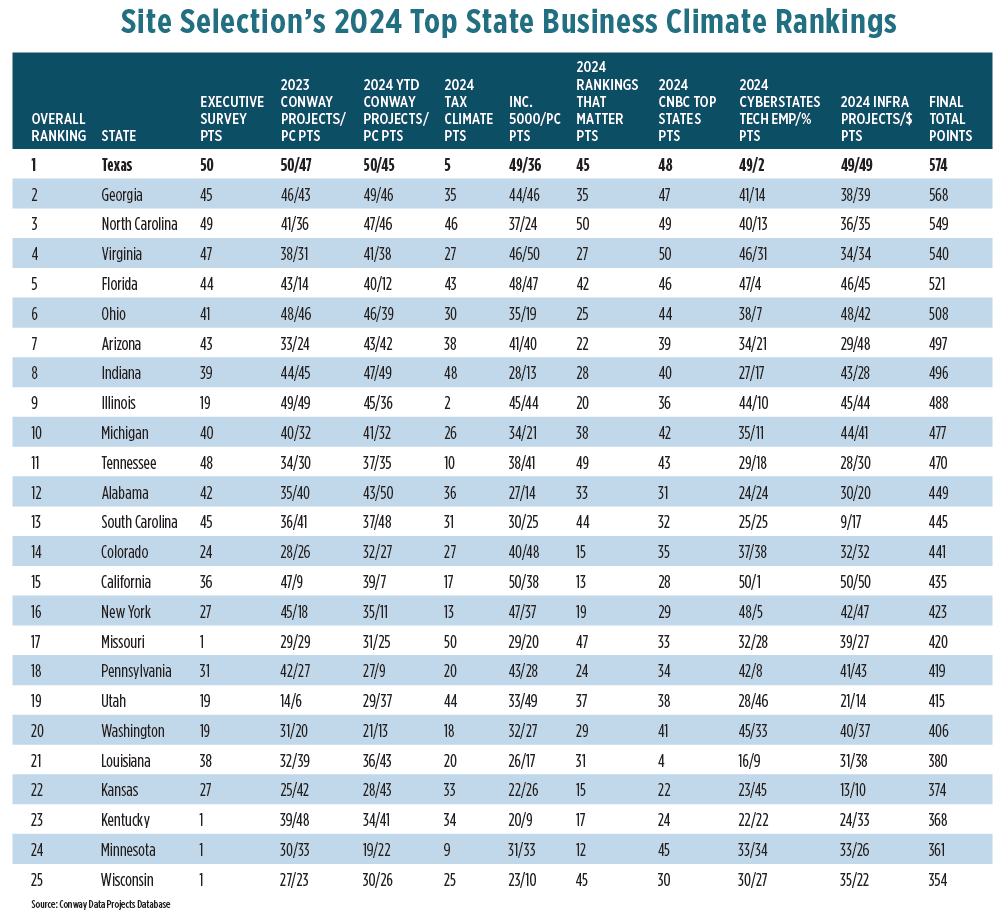
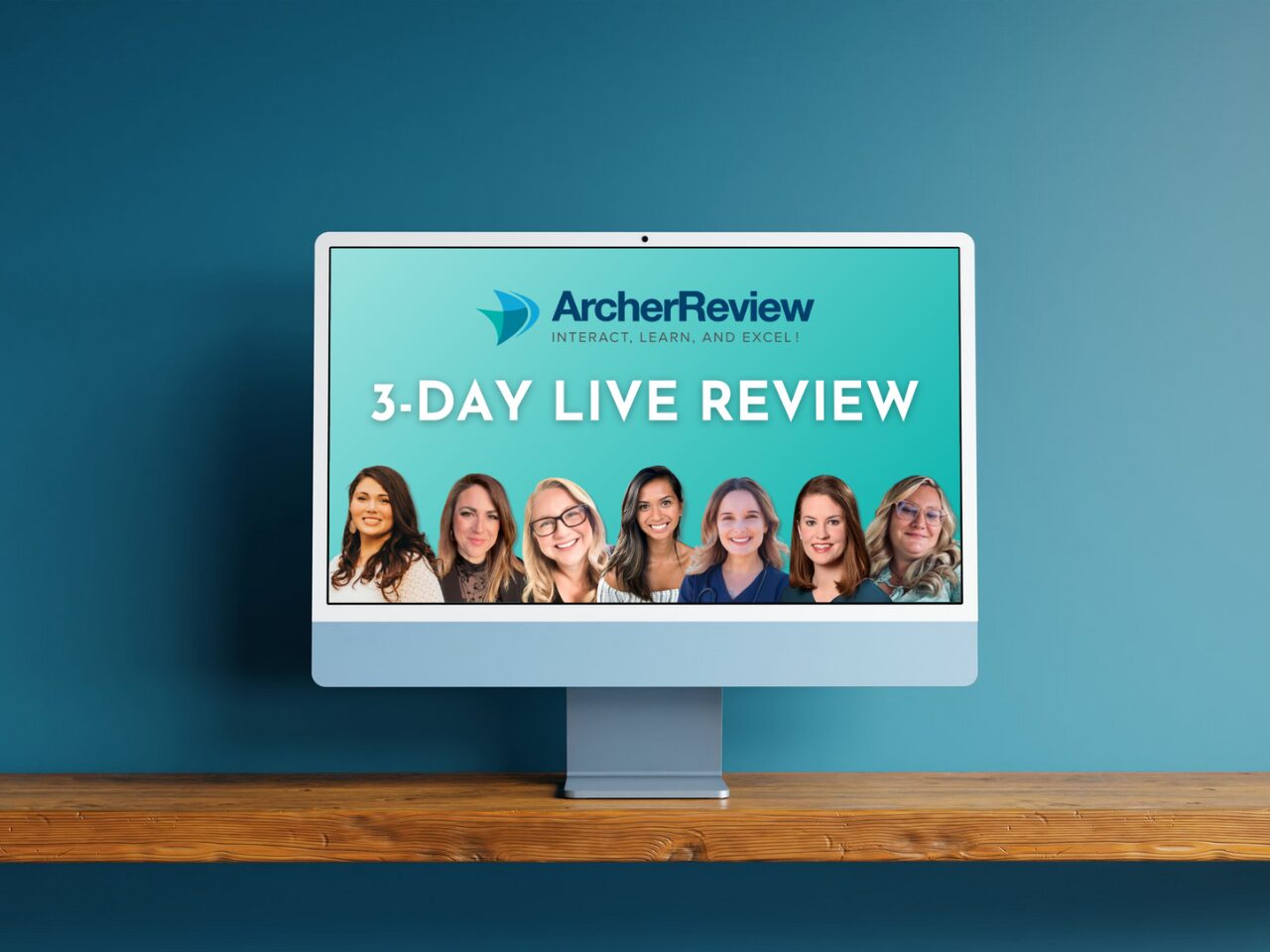


Archer Review’s growth has been driven by its success with nursing exam prep and review.
Who knows? Archer might one day consider other top finishers in this year’s rankings as the company expands from its successful nursing exam niche to medical school and other areas. The company only employs a handful of people directly and works with around 35 independent contractors around the country who deliver web courses and other services to help students ace those tests. “We are a Covid baby,” Koduru says, with those three straight years of Inc. 5000 success coming straight out of the pandemic.

But as the company gains critical mass, Koduru sees the need for gathering team members together at a physical location soon, perhaps starting in the Collin County community where those few direct employees convene today.
Its name? No joke: Prosper, Texas.
Dr. Karthik Koduru is founder
and CEO of Archer Review, an
education technology company
based in Prosper, Texas.
Photos courtesy of Archer Review
A Big Draw
“Texas has many advantages which attract business to the state,” says Raymond Garfield, chairman and co-founder of Garfield Public/Private LLC. “Texas is universally known as enterprise friendly.”
Garfield leads a financing and legal team that engineers creative financing structures and secures capital for public/private developments, with a track record over more than 40 years that includes the development or disposition of more than 9,000 acres of urban properties totaling over $1 billion and the financing or sale/acquisition of major properties totaling over $6 billion nationwide. His firm, he says, “has worked across the nation in other states, including those that are ‘no or slow growth,’ mired in weighty regulations that take years to navigate. By contrast, Texas is pro-growth and accommodating to new businesses and new real estate developments.”
Garfield develops nationally and is currently engaged in Texas, Florida, Missouri and Minnesota. “We are pursuing developments in Ohio, Indiana, Illinois, Michigan, New York, Washington and Kansas,” he says. “We look for opportunities nationwide and have confidence in the economies of the states listed, but over the past several years the majority of our activities have been in Texas. Wherever we develop we consider several factors before we compete. The regulatory issues in a state are critical to any decision to move forward. Because we are a public/private developer, almost all our developments are ventures with government agencies, so permitting, entitlements and other issues are minimized because our public clients find these items to be the low-hanging fruit in facilitating their developments.
“A few states in which Garfield has competed for projects have provided challenges, and will remain nameless,” he continues, “but key hurdles have included regulatory red tape, lack of unanimity among municipal governing bodies, poor histories of achievement, and inadequate financial credit or funding capacity.”

So why is Texas so conducive to development? “Texas has a favorable tax structure with no personal income tax and a minimal corporate franchise tax,” Garfield says. “This has contributed to the state’s success and drawn people from around the nation.” He also echoes Koduru’s observation about infrastructure and related logistics advantages: “Texas has outstanding infrastructure including state-of-the-art telecommunications, thoroughfares, utilities and airports, most notably the second busiest airport in the nation at Dallas/Fort Worth International Airport. Texas’ location on the Gulf of Mexico enables it to excel in the shipment of goods. Texas has led the United States in state export revenues for over two decades and boasts more oil refineries than any other state, including the nation’s largest refinery — Marathon on Galveston Bay.”
Survey Says
In the executive survey portion of the rankings index (where corporate location decision-makers were asked to rank their top state business climates), Texas also reigned supreme, followed by North Carolina and Tennessee.
Among comments left by survey respondents to explain their choices were these:
- “Anywhere in the Southeast and South … business climate (i.e. liberal states are losing businesses and conservative states are gaining), low tax base, available work force, power, water and infrastructure all matter.”
- “Flexibility on terms and deals — no deal is easy and these states find a way to be way more flexible and will be willing to work harder to make a deal come through.”
- “Cost of doing business, responsiveness of economic development agencies, applicability of incentives, site readiness programs, site availability, tax/regulatory environment, political stability (consistency).”
- “Utility access, workforce, government responsiveness and tax burden.”
- “Ecosystem for and attractiveness to manufacturing: workforce (quality, cost, training capability), utilities (capacity, quality, cost), transportation infrastructure/access, ready available sites, focus on and friendliness to manufacturing.”
- “Long track record of reasonable business regulation, moderate taxation, investment in infrastructure, strong emphasis on workforce, moderate business costs.”
- “Taxes, labor availability, inward migration and ability to generate electricity needs.”
- “Growing economy, ongoing economic development efforts, transportation & utility infrastructure, talent and universities.”
The Small and the Mighty
Look at the new Business Ready rankings from World Bank and it’s apparent: The countries deemed most business-friendly tend toward the entrepreneurial: Estonia and Singapore lead the way. Why shouldn’t the 50 states and their regions be the same?
It’s one reason Site Selection introduced Inc. 5000 data (total companies and companies per capita) into the rankings’ 14-metric index alongside factors such as our proprietary Conway Projects Database data tracking major facility projects from mostly major-sized companies.
This year’s top states are familiar leaders. Their rosters of growing operations from familiar large corporations are legendary:
ExxonMobil’s new HQ in the Houston area is one of several examples from the company, which in October executed the largest offshore carbon dioxide (CO2) storage lease in the U.S. with the Texas General Land Office (GLO). The company also is ramping up a massive low-carbon hydrogen and ammonia production facility in Baytown, Texas, that has attracted an equity stake from Abu Dhabi-owned petrochemical giant ADNOC. Meanwhile, Chevron in August announced it would move its HQ to Houston from California.
SK’s giant battery manufacturing complex along I-85 in Georgia and Eli Lilly’s gargantuan investments in North Carolina are but a few examples from other leading states.
What might be unfamiliar is how friendly these states are to startups and small to medium-sized companies (SMEs) — the proverbial “bedrock” of the American economy, as McKinsey stated in October. Examining their trajectories is a way to turn the usual storyline on its head: Yes, smaller firms often cluster around the big boys. But it’s also true that where multinationals see an abundance of fast-growing firms, they see dynamic clusters and networks they too want to be a part of.
Data and the latest research corroborate this hunch. In the Q3 2024 PitchBook-NVCA Venture Monitor report released by Pitchbook and the National Venture Capital Association in October, the number of year-to-date venture capital deals in Texas (569) was the nation’s fourth highest through three quarters, after besting legendary venture capital leader Massachusetts in calendar year 2023 to be No. 3 in the nation with 897 deals. By VC deal dollar amount, Texas was No. 4 year-to-date at more than $5.1 billion after finishing 2023 at fourth in the nation with nearly $7 billion in deals.
Ranked by their percentage revenue growth over the last three years, the 2024 Inc. 5000 collectively have generated 874,940 jobs and $317 billion in revenue over three years and have displayed median revenue growth of 1,637%. They also generate momentum for the states and regions in which they are headquartered. Here are the top 10:
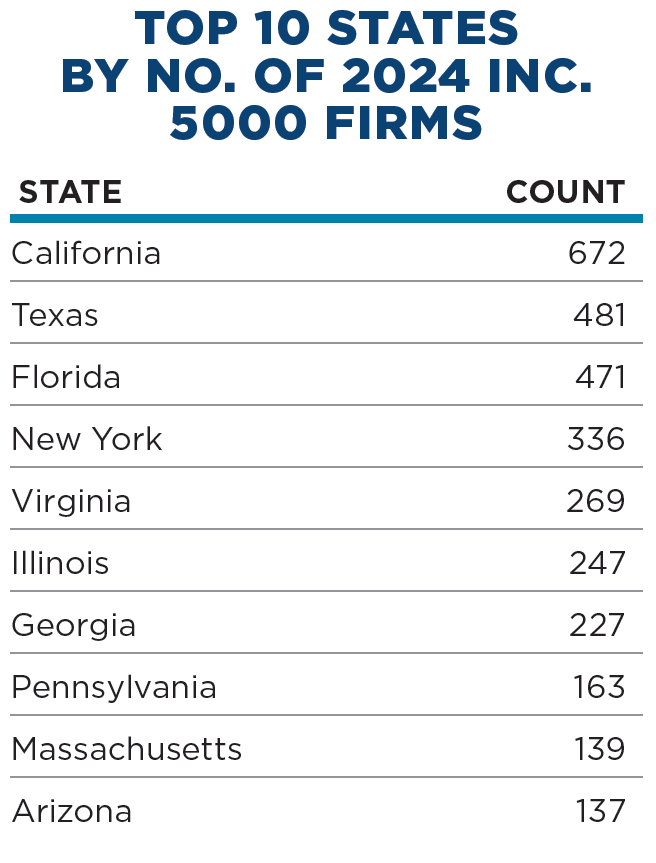
Outside the top 10 states but still boasting more than 100 Inc. 5000 firms were the following, including four states in this year’s Business Climate Top 10:
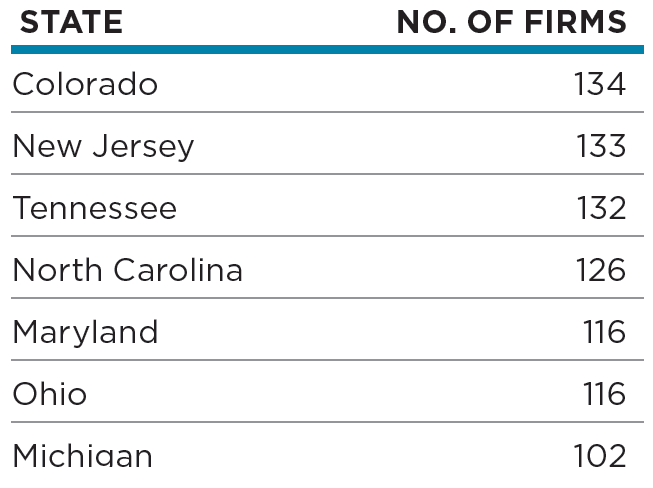
Analyzed on a per-capita basis, Virginia tops the Inc. 5000 list, followed by fellow Top 10 Business Climate states Florida at No. 4, Georgia at No. 5, Illinois at No. 7 and Tennessee at No. 10.
The 481 Inc. 5000 firms in Texas are attracted to the state’s top-ranked business climate and growing populations in multiple metro areas. Based in the Houston-area community of The Woodlands, Segment HR is the top-ranked Texas Inc. 5000 firm at No. 32, followed by Austin-based raw dog food company Maev at No. 38, Archer Review at No. 46 and Austin’s Bucket List Events at No. 61.
Compare the top 10 metro areas by number of Inc. 5000 firms (below) to our Business Climate top 10 and you’ll see that four of the top seven and six of the top 10 correlate.
The Austin-Round Rock-San Marcos metro area just misses out on the top 10 with 124 firms. But when calibrated on a per-capita basis against its population of just over 2.4 million, metro Austin is No. 4 in the country and No. 1 among tier-one metro areas with populations of 1 million or more (the next closest is the nation’s capital). Metro Houston is No. 14 on this year’s metro list but its namesake city is way up at No. 6 when the numbers are parsed by municipality instead of metro region, as the city proper accounts for 69 of the region’s 99 Inc. 5000 firms.
When looking at municipalities instead of metro areas, three of the top six cities by number of fast-growing companies are in Texas, accounting for 259 of the state’s 481 Inc. 5000 firms.
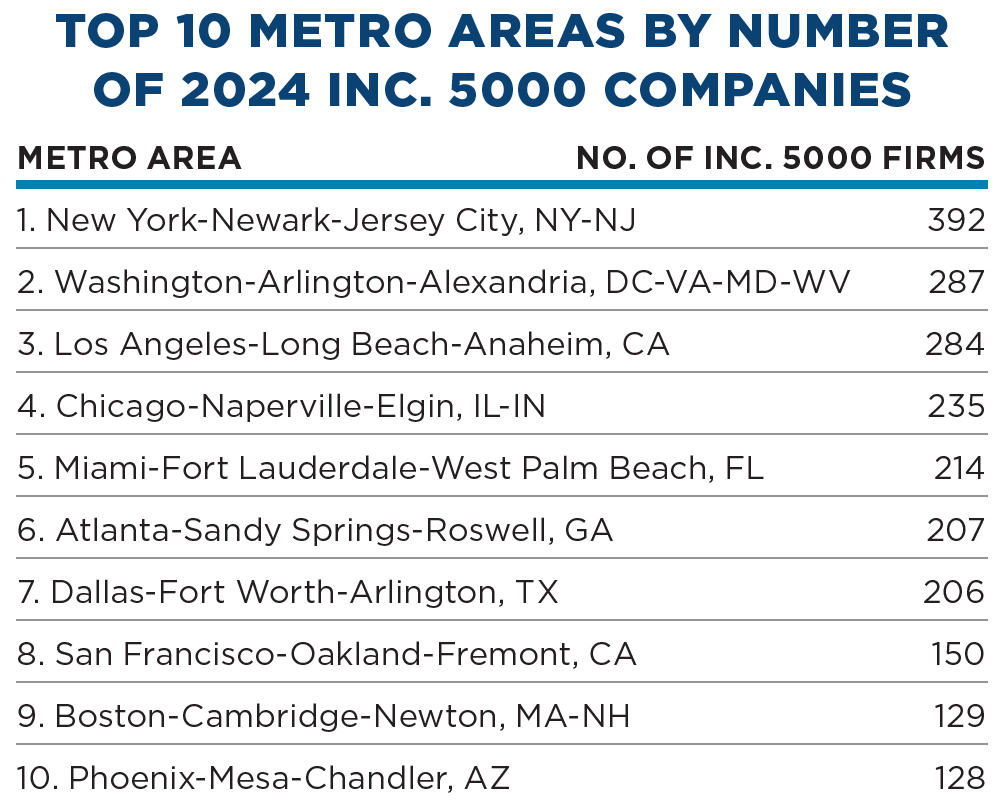
That said, these cities’ neighbors are doing their part: Even though Dallas has a healthy 82 firms, that’s less than 40% of the 206 Inc. 5000 firms in the Dallas-Fort Worth-Arlington metro area. Irving, for example, is home to 22 of those companies, ranking it No. 7 in the nation on a per-capita basis against its population of 216,300. No. 10 on that national per-capita list is Texas Instruments’ chosen fab expansion location of Richardson, with 10 such firms spread across its population of 99,200.
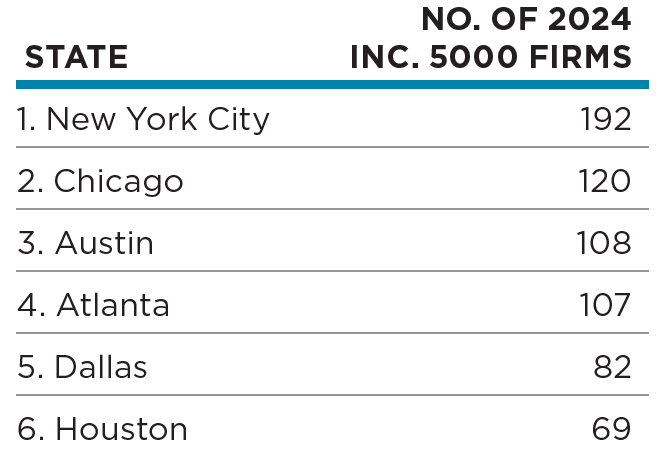
Two-Way Street
The McKinsey Global Institute recently aggregated “a richly granular data set” of MSMEs (micro, small and medium-sized enterprises) and large companies across 12 broad sectors, 68 level-two subsectors and more than 200 level-three subsectors in 16 countries with different income levels, accounting for more than 50% of global GDP. “MSMEs play a large role across the board,” the report stated. “In the advanced economies, they average 66% of employment and 54% of value added.” They also have a good chance at outgrowing their MSME status: Meta and Zoom are among one-quarter of the large public tech companies that were MSMEs within the past 25 years, McKinsey notes.
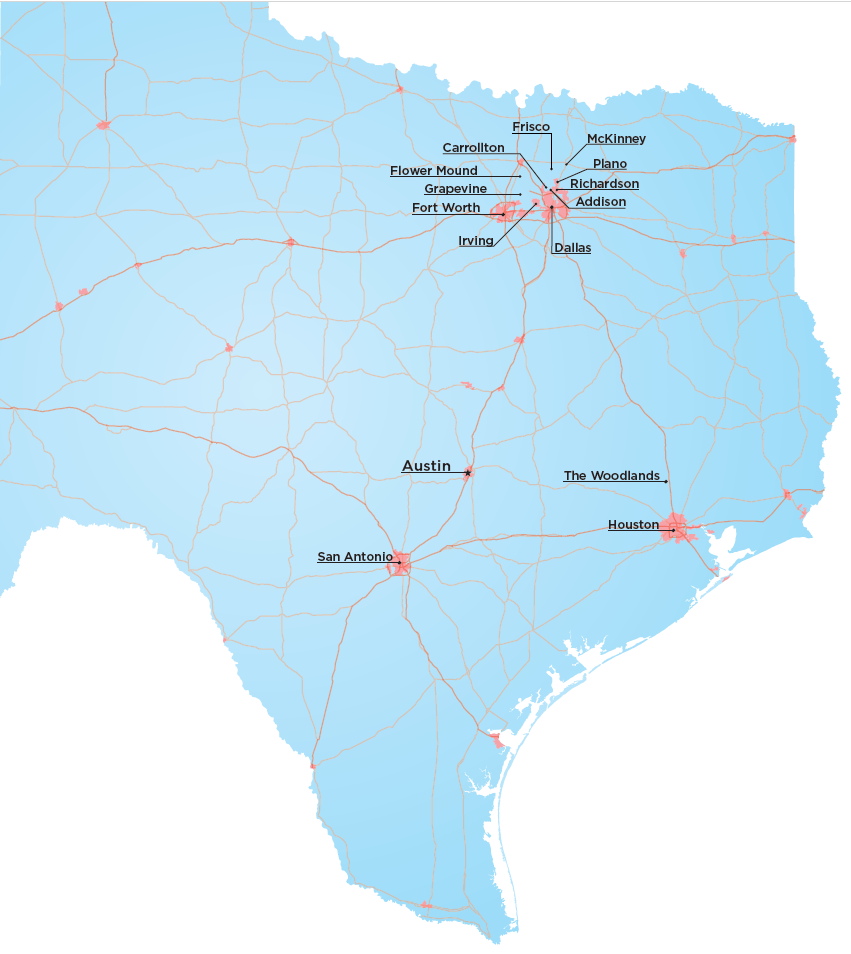
Three metro areas rank in the top 15 nationally: No. 7 Dallas-Fort Worth-Arlington (206 fi rms); No. 11 Austin-Round Rock-San Marcos (124); and No. 14 Houston-The Woodlands-Sugar Land (99).
“Why do MSMEs in some states and metros perform better than others?” the report asks. “Reasons could include differences in the business environment and policies. Some states have tax, regulations and compliance systems that support the expansion of large and small companies alike. Some states have more deeply ingrained business networks, greater availability of financing and a concentration of talent, which provide a boost to MSMEs that struggle to access these competencies.”
Of course, those same attributes provide a boost to big firms too. “Businesses large and small should reconsider whether they have an adversarial approach to one another,” the report states. “Policies that attempt to create incentives, quotas, or protections that tilt the balance toward either small enterprises or larger ones aren’t necessarily the solution. The truth — broadly — is that both MSMEs and large companies can benefit when they are operating within the right economic conditions. Large companies could help smaller companies acquire competencies — but it’s not a one-way street. Small companies help large companies as customers, suppliers, and sources of new ideas. In fact, the productivity of large and small companies tends to move hand in hand in most sectors. Boosting interactions between them could raise overall productivity for everyone.”
I asked Olivia White, a co-author of the report who is senior partner at McKinsey & Company and a director of the McKinsey Global Institute, about the balance of big and small enterprise success and how it relates to location.
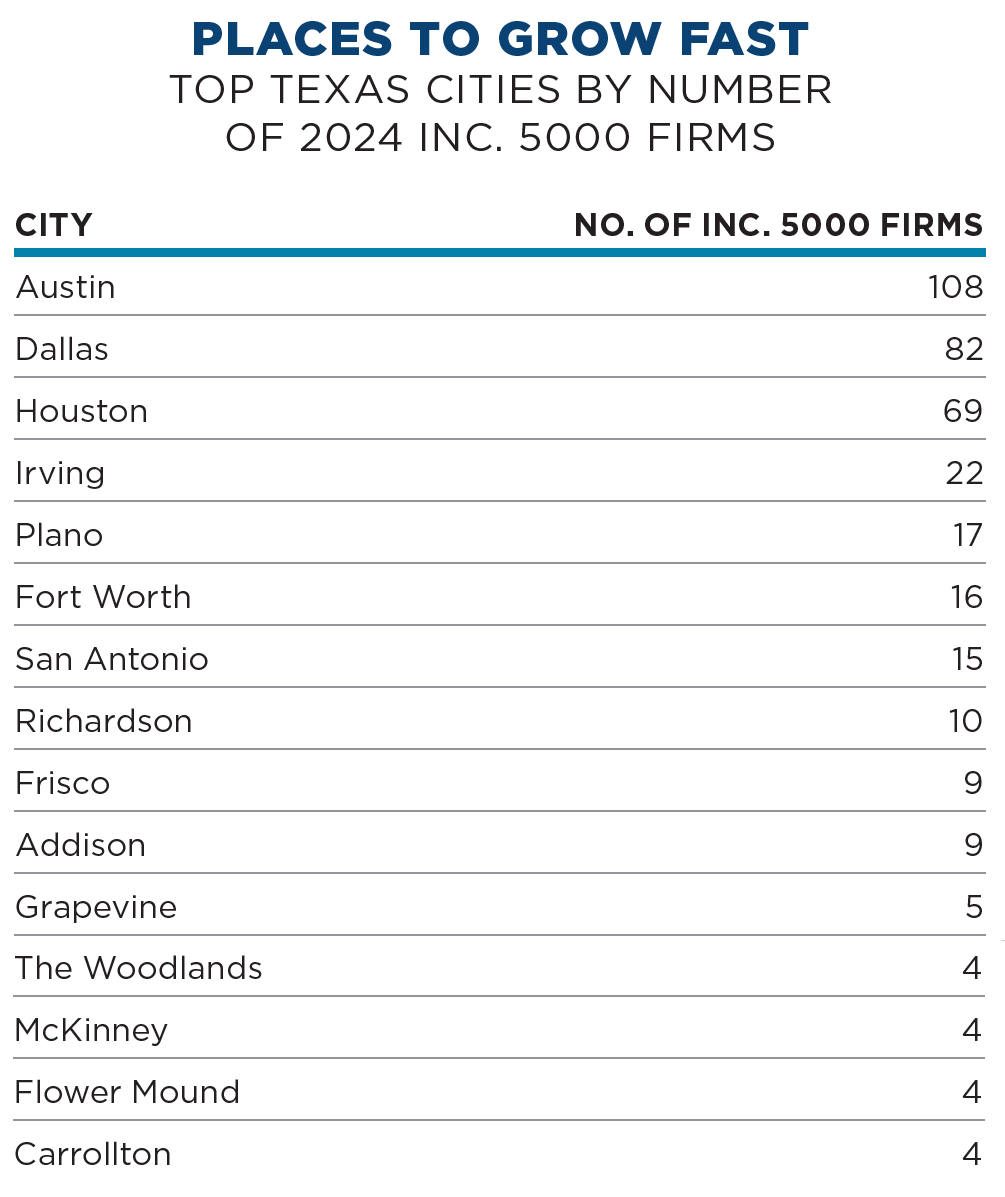
“In terms of economic contribution of micro, small, and medium enterprises, as economies evolve, there is a natural progression of employment shifting to larger enterprises,” she says. “This progression can play out in different ways — some MSMEs scale into larger companies, others may be acquired by larger enterprises, and some may even cease operations and make room for new businesses. But even in the most advanced economies we studied (Italy, Portugal, Israel, Japan, Spain, Poland, Australia, Germany, UK, U.S.), MSMEs continue to contribute two-thirds percent of all business employment on average, and more than half of value added.”
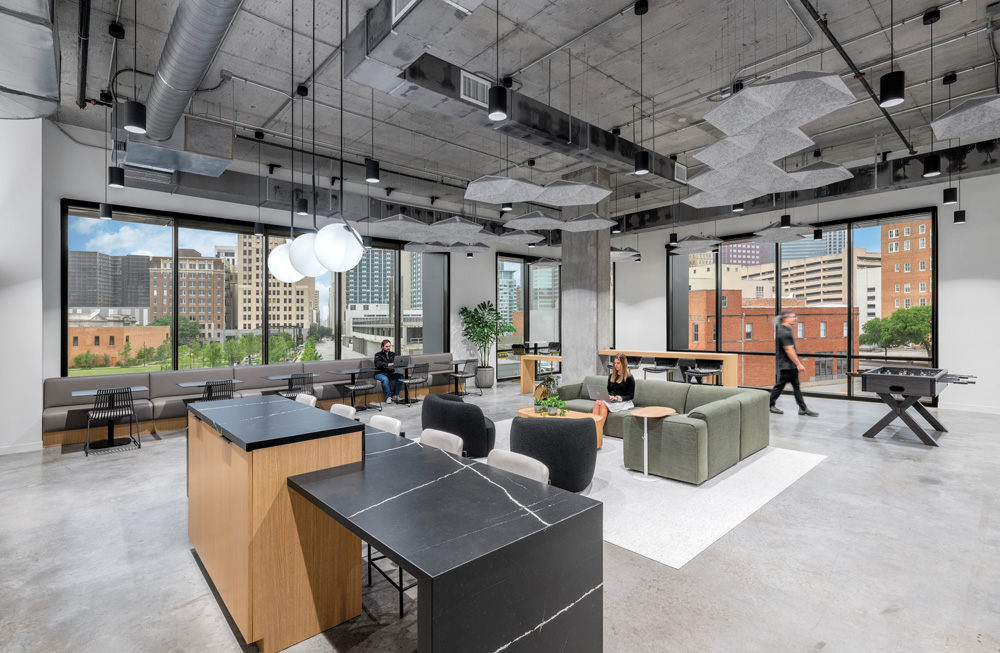
Digital brokerage platform company Altruist just moved into this new office space in Dallas.
Photo by Wade Griffith Photography courtesy of Tangram Interiors
In the study, she says, there was no correlation found between the stage of development/income level of the states and the presence of small businesses. “But there is a good place to be when you look at the performance of large and small businesses,” White notes, referencing a graph of the study’s results showing MSAs and states where both small the large businesses perform above average. They include Texas and other top states in Site Selection’s rankings, as well as metro areas such as Houston, Chicago, Indianapolis and Charlotte.
“Across geographies,” White says, “we observe that the performance of large and small businesses goes hand-in-hand, as local variations — policies, economic conditions, infrastructure and networks — tend to influence the productivity of businesses of all sizes.” The report cites a few examples of clusters where all sizes can thrive: “Today, Napa wineries, Dalton carpet companies [in Georgia], and High Point furniture factories [in North Carolina] are a mix of big and small businesses, and in many cases still include family-run operations,” the report says. “They succeeded not only because of their product but also because of their ability to efficiently produce it at scale. The regions’ success illustrates how, under the right conditions, micro-, small, and medium-size enterprises (MSMEs) in any industry can expand their global reach.”
All Grow Where Tech Grows
As Dr. Koduru suggests, fast growth and tech growth can be mutually complementary. Statistics from the annual CyberStates tech jobs report from CompTIA comprise two of our 14 metrics. “States that experienced notable tech employment gains include Texas, Florida, New York, North Carolina and Washington,” the organization said at the release of the report in April 2024. Notably, while states with smaller, more spread-out populations led in tech job growth on a percent change basis, Texas was right there in the top five too.
Among other CyberStates highlights relevant to our top-ranked states:
- Virginia is No. 3 (just behind its nation’s capital neighbor District of Columbia) in net tech employment concentration at 8.9%.
- “On a numeric basis, Florida had the largest year-over-year increase of net new tech business establishments (+2,474). Rounding out the top five for net new tech business establishments were Virginia, Texas, New York, and North Carolina,” i.e. four out of the top five were among this year’s top five business climate states.
- Texas and Florida are among the top six states in terms of the tech sector’s direct economic impact.
- While California leads most tech employment categories, Texas, Virginia and Florida were among the top five states for employer hiring activity via tech job postings in 2023. And Texas (46,530), Virginia (31,089) were No. 2 and No. 3, respectively, by number of emerging tech job postings.

Olivia White, Senior Partner,
McKinsey & Company and Director,
McKinsey Global Institute
Employment and talent, after all, are where the rubber meets the road. Dr. Koduru and his team know that’s true in more ways than one if his company is to continue prospering in Prosper.
“One reason we even entered the nursing space in 2020 was seeing how much of a crisis nursing was facing,” Koduru says. “We thought, ‘Hey, increase the pass rate by 10 percentage points, you’re adding 30,000 nurses a year to the workforce.’ People complain about shortages, but there’s not enough emphasis on improving the pass rate. Why is that person who went through the entire nursing school failing this final exam? That would help solve the shortage.”
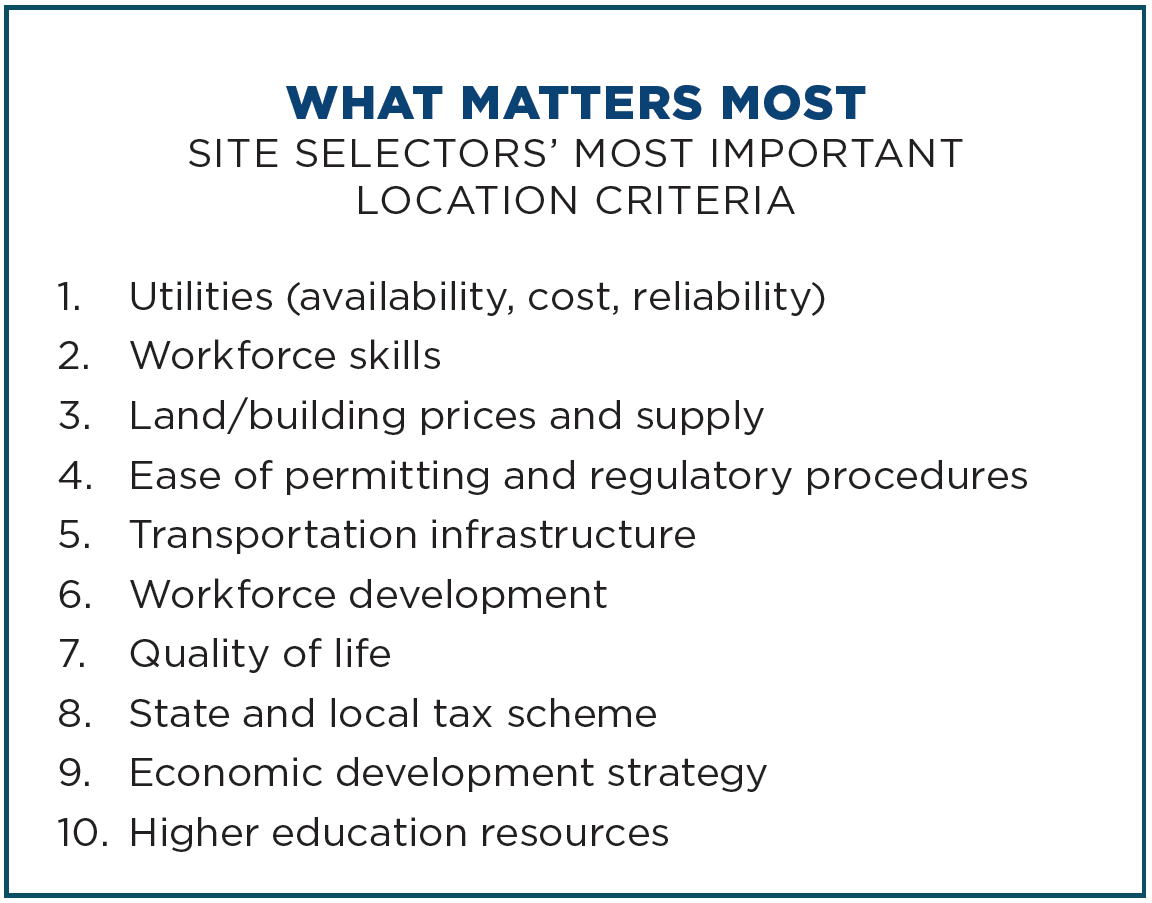
It Takes Talent to Cultivate Talent
It’s a shortage that continues to increase.
Even as the company has served around 200,000 nurses in the past year, the next step is collaborations with hospitals, he says, in order to help retain and upskill that workforce. “We know how they perform on their test screen levels. Is there a way to intervene, get more feedback from them and help them with their careers in the future? If we step in the hospital and make sure they are retained, we listen to their problems and help them upskill. I think that will really help the shortage.”
Koduru says one challenge to be confronted in Texas and everywhere else is the fact that immigrant talent comprises so much of the nursing workforce, but is met with visa and citizenship roadblocks. He himself was so impatient as a practicing oncologist who had paid taxes and contributed to society for 12 years that he went the EB-5 route instead.
“The U.S. is dependent on international nurses,” he says. “Thirty percent of those 200,000 are international and 30,000 to 40,000 take our course every year. But they have put nursing in the same bucket as other immigration. Nothing is being done about it. International nurses are passing this exam but aren’t able to come on time. There are signed contracts, but hospitals are still waiting.”
Meanwhile, domestic workforce development continues. Asked how he’s interacted with the widely praised community college and higher education system in Texas, Koduru says, “It’s funny you bring that up. We just had a call with the Dallas Regional Chamber yesterday asking us how we’d like to get involved as a strategy partner.” Providing tools for community college students before and after they take their boards is one potential avenue as professionals continue to upskill.
“That’s our focus,” he says. “An entry-level nurse and then see their journey through school. After graduation, upskill them so you create value for these hospitals, if they are willing to invest in their employees. Increasingly hospitals are realizing, ‘Why don’t we just upskill our nurses so we can retain them?’ Be interested in their growth and higher pay scale. The retention will automatically come. Turnover is great for staffing agencies, but not so great for hospitals and budgets. If an RN wants to become a nurse practitioner, we have courses for them, and also hold their hands in that journey … It has such a big impact on their entire family. Nurses come from various socio-economic backgrounds, and it’s important to be accessible and affordable.” The company attracts between 1,000 and 1,500 students every day to its live webinar courses.
It’s all about employee retention, with health care education serving also as a tool to solve the staffing crisis, Koduru says, training nurses to fill gaps that include serving in remote areas. “I brought this up with the Regional Chamber, and they said there are a lot of opportunities. We still have to explore that area.”
The company is exploring following the nursing school model for medical schools too. As it does so, retaining talent at Archer becomes more of a priority too.
“Our employees are spread out, but we’re trying to get the Texas team together and have them all here,” Koduru says, as the roster builds up with nurse practitioners, physician’s assistants, illustrators and other roles. Regardless of location, most company discussions occur in Slack, he says. At the same time, “once we find a contractor who delivers good work and fits into the cultural vibe of the company, we try to absorb them,” he says. “People are pretty comfortable doing teaching from different places. But I do believe we need to have at least part of the team physically present in the office at least two days a week. There is more brainstorming and dialogue.”
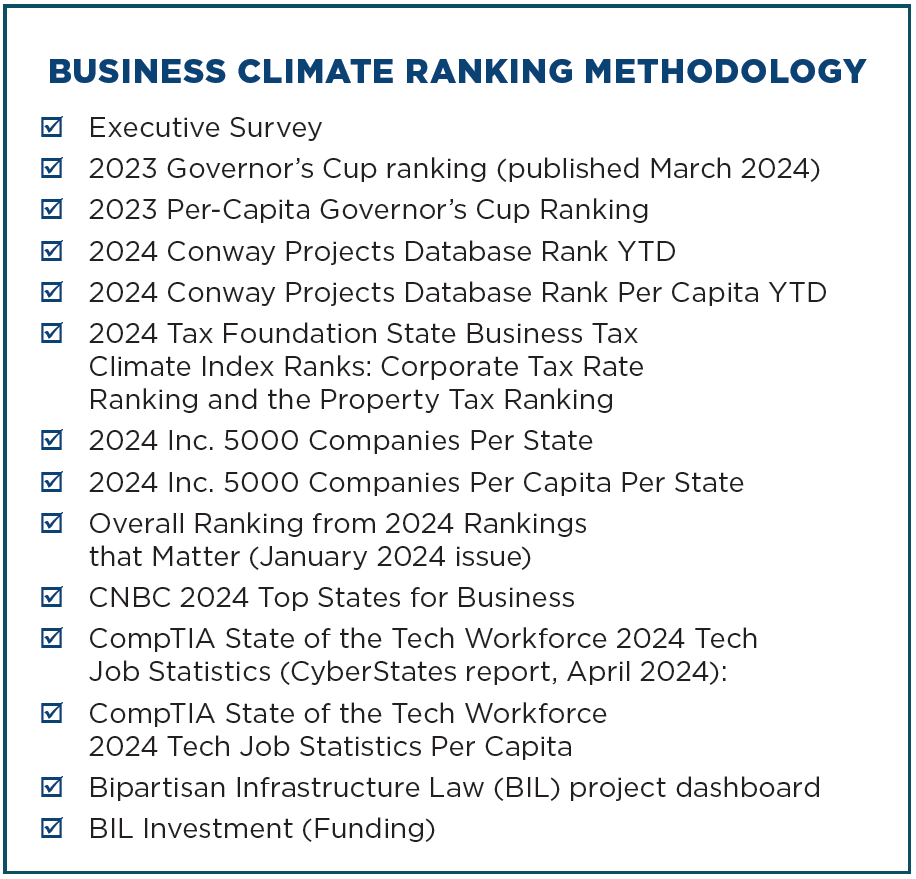
And location matters for fostering such dynamics.
“A lot of restaurants are full in the evenings, with people basically discussing business,” he says. “It’s a different thing: You’re having fun, but discussing ideas. There’s a vibe of startup culture San Francisco has always had, but it’s being seen in Dallas these days.”
Other states can compete, he says, but “it’s hard to beat Texas because of the infrastructure being developed. Entrepreneurs want to see construction and building. You see building happening all over here.”
Data entry and analysis for this report conducted by Karen Medernach, McKenzie Wright, Brian Espinoza and Daniel Boyer.

